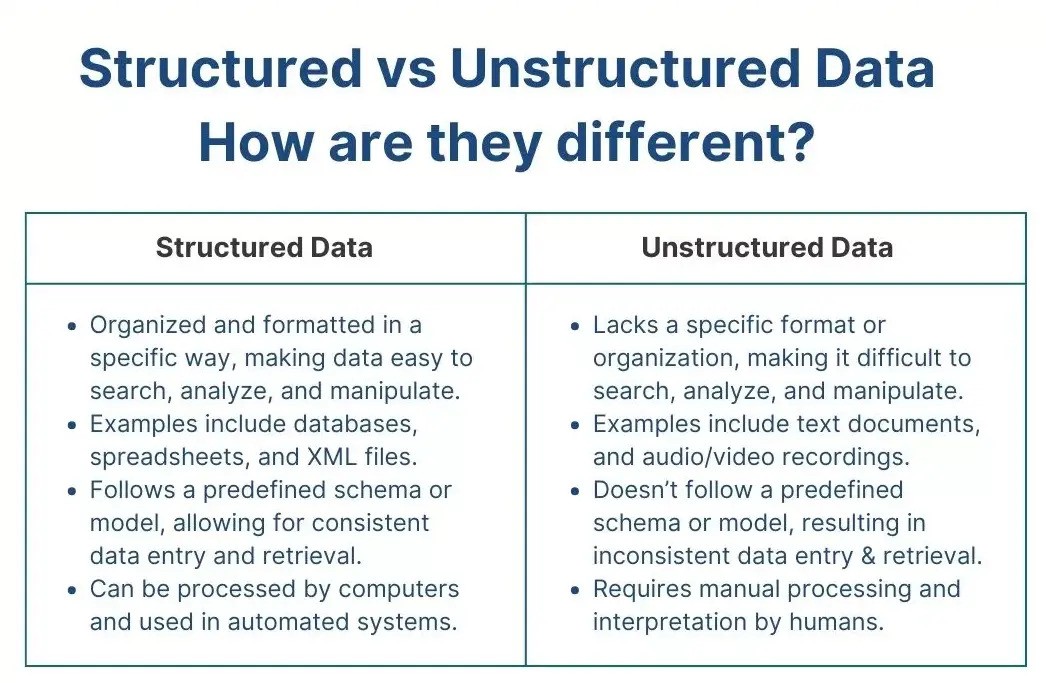
About Course
In today’s data-driven world, organizations handle vast amounts of information that fall into two main categories: structured and unstructured data. Understanding the differences between these data types is crucial for effective data management, storage, and analysis.
This course provides a comprehensive overview of structured and unstructured data, their characteristics, advantages, challenges, and real-world applications. You’ll explore how businesses store, process, and analyze data in different environments, from traditional databases to modern big data solutions.
What You Will Learn:
✅ The key differences between structured and unstructured data
✅ How structured data is stored in databases (SQL) and how unstructured data is handled in NoSQL, cloud, and big data platforms
✅ Real-world examples of structured vs. unstructured data in business, healthcare, finance, and more
✅ The role of metadata, indexing, and retrieval in data management
✅ Best practices for organizing and managing both types of data
✅ Emerging trends in data management, including AI-driven data processing
Who Should Take This Course?
- IT professionals, data analysts, and business intelligence experts looking to deepen their understanding of data structures
- Business leaders and decision-makers who want to optimize data strategies for efficiency and scalability
- Students and aspiring data professionals aiming to build a strong foundation in data management
By the end of this course, you’ll have a clear understanding of structured and unstructured data and how to leverage them effectively in different business and technological landscapes.
Join us and enhance your data management skills today! 🚀
Course Content
Data Management Foundations
Student Ratings & Reviews




